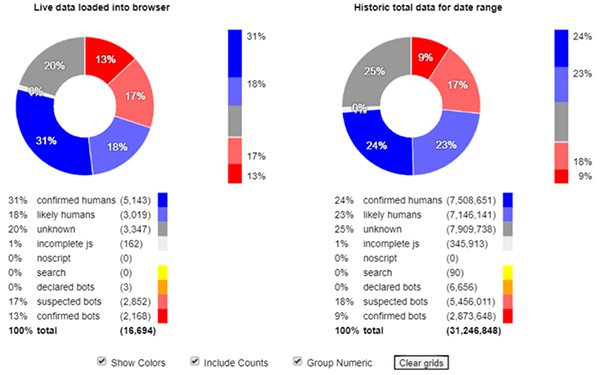
Waste in programmatic is an opportunity to
take the competitive advantage, not a problem that needs to be checked, solved and swept under the rug, explains Goodway Group CEO Jay Friedman.
“When we go to a brand and say you can
have 20% or 30% of your budget back, it’s a completely new way of thinking for them,” Friedman said.

The Goodway Group, which uses Fou Analytics as a set of the agency’s tools, released a
white paper detailing how to analyze and change programmatic waste into a competitive advantage by analyzing more than 60 variables that drives fraud and good traffic.
“The money needs
to get to the publisher,” Friedman said.
Programmatic was originally created to monetize unsold online display inventory, suggesting to publishers that even if they only get a $1 CPM,
it’s better than nothing.” That’s not true, according to Friedman. The white paper details ways to eliminate ad fraud, efficiently buy programmatic media with minimal waste, and save
brands tens of millions of dollars as a result.
advertisement
advertisement
By breaking down the key steps needed to combat programmatic pitfalls, the report is part of a larger effort to move the entire digital
media-buying industry forward and change the marketing ecosystem from failure to prevention.
“Usually, we hear these super large quantities for an ad campaign like 800 million
impressions, but what’s not disclosed is what portion of the ads are measured with the JavaScript tag,” said Augustine Fou, a former American Express and Omnicom executive, and now an
independent cybersecurity and ad fraud researcher
“JavaScript is used to identify perimeters in the browser,” he said. “If you didn’t measure it with JavaScript, you
cannot tell if the ad was audible, viewable or invalid.”
For example, the vendor ran 407,000 impressions on safeframe.googlesydication.com.
The advertiser paid a CPM for all. The
vendor only measured 6,561 impressions, which means the advertiser paid twice as much as they should have.
Then the fraud rate was 1,061, about 16% of the measured impressions, and in the
reporting divided it by all impressions even though they didn’t measure them.
Vendors have been providing reports to agencies and advertisers for years that have been less than accurate,
Fou said, and agencies and advertisers must ask what percentage of the ads were correctly measured.
The FouAnalytics technology combines, data, fraud detection and analytics to provides
details such as hourly data about ad serving and clicks.
Metrics like attentiveness identified as a human landing on a page and clicking through to another or scrolling up and down the
page.
Since marketers cannot rely on Google Analytics for programmatic ads, this technology uses an in-ad tag to verify all these factors.
It combines analytics, optimization and fraud
verification through a Java-based embed on the websites.
Then through a system of red and blue flags, it uses deterministic calculations to find invalid traffic. JavaScript parameters and
discrepancies and other errors identify the way bot-makers make the bots.
Those discrepancies set off red flags. For example, 12 years ago, if the user agent, meaning the name of the device,
declared itself to be an iPhone, but the resolution on the screen did not match the resolution of a real iPhone, the technology would flag the click.
Three or more red flags tied to one
impression is marked as a deep red flag. The same is true for blue flags.
“The bots can fake all those things, but we have more than 12 years looking at the data,” Fou said.
Fou created the process after observing a 200% click-through rate in search ad data for a specific campaign. At the time, no one understood why or how it could happen, until he
realized bots were clicking on the ads.
The technology today can determine nuanced in campaigns such as if more ads run at night when most humans sleep, if it’s a fraud issue or an
agency forgot to set frequency caps.
“Back then we started with a tag that went onto client’s sites like pharmaceutical manufacturers, and we could actually see the clicks coming
through to the site,” he said. “Back then bots were pretty simple automated systems, they loaded it the ad and then clicks on it.”
Today the technology — analytics,
optimization and fraud verification — is used by Goodway Group and other agencies, as well as advertisers to analyze media and clicks that arrive on the websites. The platform provides more
details such as hourly data. If more ads run at night when most humans sleep, it is not necessarily a fraud issue, Fou said. It might be the agency forgot to set frequency caps.